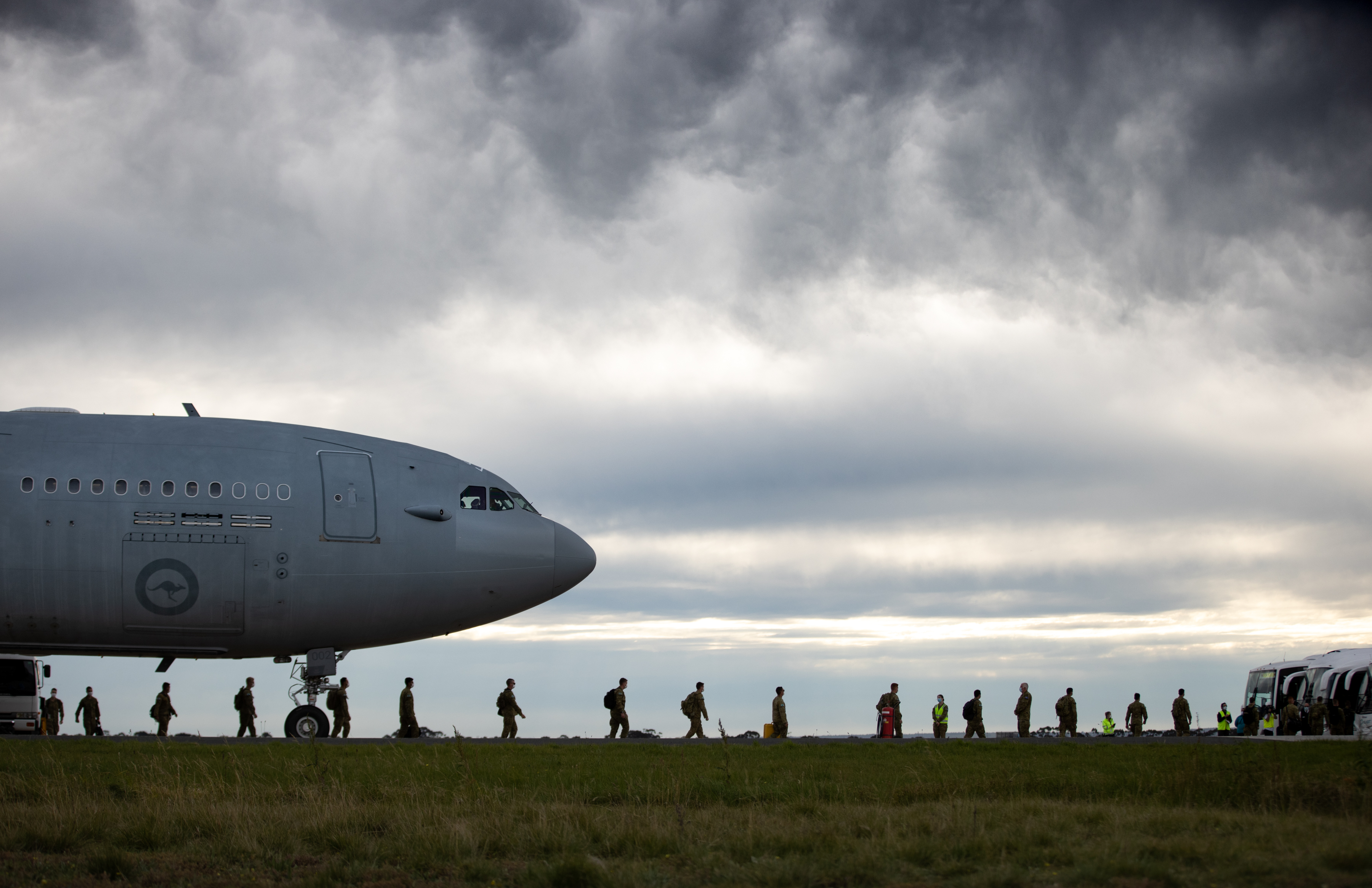Australian Army Research Centre Spotlight Briefs provide a periodically released curated overview of issues relevant to Australian Landpower. Spotlight Briefs derive solely from available open source material. Inclusion of material in a Spotlight Brief does not imply or reflect Australian Army, Australian Defence Force or Australian Commonwealth Government policy.
Seizing on weakness: Allied strategy for competing with China’s globalizing military
Source: Center for Strategic and Budgetary Assessments - Jan 21
The opening paragraph of this lengthy (122-page) report asserts ‘China’s military is going global’. The stated implication is ‘the United States and its allies and partners, who have enjoyed largely unobstructed access to the worlds’ oceans for the last three decades, will need to adjust to new military realities as the PLA makes its presence felt in faraway theatres’. Yet every new circumstance yields opportunity. Toshi Yoshihara and Jack Bianchi argue the rise in Chinese power also bring new vulnerabilities and weakness for possible exploitation. They present three potential weaknesses as possible sources of Western advantage:
- As a hitherto continental power, China’s ‘decisive seaward turn’ risks an unacceptable two-front dilemma. While amity with Russia over the last three decades has freed China to go sea, the potential for continental challenges to undo China’s global ambitions cast a long shadow over its strategic calculus. The recent low-level border skirmishes between China and India in the Himalaya could serve as a test case for determining how Beijing can manage landward tensions even as it extends its reach at sea.
- The PLA’s need to sustain a diversified force structure for contingencies near and far precludes a concentration of effort devoted entirely to global missions. The Chinese military must meet disparate and, at times, contradictory demands arising from Beijing’s local and global commitments.
- Finally, the PLA needs to close significant gaps in its overseas logistical infrastructure to obtain a credible global military posture.
These three issues provide planners a possible basis for devising and evaluating counter-strategies to constrain the PRC’s globalising military.
Further reading:
'China is Both Weak and Dangerous', Foreign Policy, 07 Dec 20
‘A Two Front War Was Never On the Cards’, The Wire, 17 Sep 20
Regional Responses to U.S.-China Competition in the Indo-Pacific
Source: RAND Corporation – 2020
While focused on the Chinese-US relationship, this report seeks to define the basis of competition within the Indo-Pacific region and what it involves for key nations. It identifies positives and negatives of Chinese and American approaches in South-East Asia – specifically related to Indonesia, Malaysia, the Philippines, Singapore, Thailand, and Vietnam – and provides recommendations in how the US can improve national and alliance approaches. While all six are incredibly important to Australia, two are vital security partners of Australia under the Five-Powers Defence Arrangement (Malaysia and Singapore) and one is essential for our security (Indonesia). Australia has different relationships with these nations compared to the US; consequently, opportunity exists to advance our interests and the interests of the wider alliance.
Further reading:
‘The challenges in resetting US–Southeast Asia relations’, East Asia Forum, 10 Dec 20
‘The United States and Southeast Asia: A New Start’, Asia Society, 17 Nov 20
‘China tightens ASEAN grip while US looks inward’, Nikkei Asia, 14 Nov 20
China's political narratives and Antarctic diplomacy
Source: Australian Journal of Maritime & Ocean Affairs – Jan 21
As one of the 12 original parties to the Antarctic Treaty Australia has an enduring interest in Antarctica. The Australian Antarctic Territory (AAT) covers nearly 5.9 million square kilometres. That is about 42% of Antarctica, while Territory is nearly 80% of the size of Australia itself. While only acceding to the Treaty in 1983, China has not been idle on the southern continent. China has become an important player in Antarctic governance. Nevertheless, it still has not legislated a law on Antarctica or issued any strategy for its Antarctic activities. The key Chinese Communist Party (CCP) political narratives do not contradict the Antarctic Treaty’s core values, and may offer common ground for Australian-Chinese rapport. These narratives may represent opportunities for seeking common ground when engaging with China about Antarctica.
Further reading:
‘Eyes on the prize: Australia, China, and the Antarctic treaty system’, Lowy Institute, 16 Feb 21
‘New Polar Strategy Must Focus On China’s Long March To Antarctica’, Forbes, 10 Jan 21
‘The growing cloud of China in Antarctica’, SupChina, 03 Nov 20
‘What Are China’s Intentions in Antarctica?’, The Diplomat, 14 Jun 19
Russia’s use of its private military companies
Source: Strategic Comments – Dec 2020
Private military companies (PMC) are a factor in Russian activities in Eastern Europe, the Middle East and wider – the so-called ‘little green men’. Russian ones appear to have closer links to Government than western ones, yet still allow a modicum of deniability. They are heavily armed, with capabilities including air defence, artillery and fighter aircraft. Unlike regular Russian military forces, these PMC operate globally - from Venezuela to Sri Lanka, and from Eastern Europe to Madagascar. This poses potential challenges for Australia, it allies and its regional partners. A main one is the likelihood of meeting Russian PMCs as they advance their operations into other areas of the Indo-Pacific, and the potential use of PMC by other nations already within the region as they seek to replicate perceptions of Russian success. Another challenge arises from the combat power of some PMC resembling that of a peer state. Forces encountering such PMC in the region will need sufficient capabilities to prevent being over-match.
Further reading:
‘Mercenaries in the Service of Authoritarian States’, Global Public Policy Institute, 04 Nov 20
‘Russia’s Wagner Group and the rise of mercenary warfare’, Modern War Institute, 12 Apr 20
‘PNG documents secret despite 'transparency' commitment’, Sydney Morning Herald, 01 Jan 20




